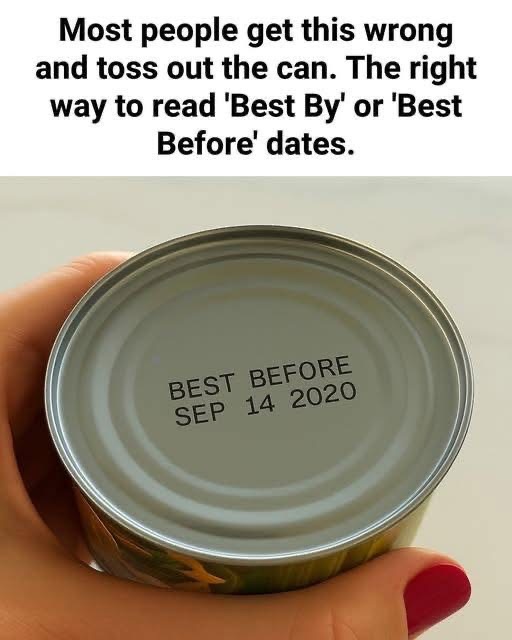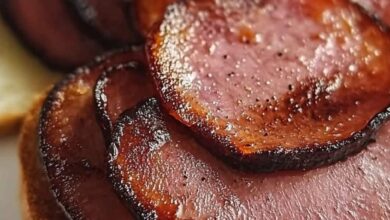Understanding “Best Before” and “Best By” Dates: What They Really Mean


When you see a date stamped on a can or package—like “Best Before September 14, 2020”—your first instinct might be to toss it out the moment that date passes. But here’s the truth: that date doesn’t necessarily mean the food is unsafe to eat!
Let’s break down what these labels really mean and how you can tell if your food is still good.
The Meaning Behind “Best Before” and “Best By”
The phrases “Best Before” and “Best By” refer to quality, not safety.
They are the manufacturer’s estimate of when the product will be at its peak freshness, flavor, and texture — not the moment it becomes spoiled or dangerous.
For example:
- A can of soup labeled Best Before Sep 14, 2020 means that after that date, the soup might lose some flavor or texture, but it’s not automatically unsafe.
- The nutrients might slightly degrade, but it won’t suddenly “go bad” like milk or meat.
Use By” vs. “Best Before”
It’s important not to confuse these two labels:
| Label | Meaning | Safety Concern |
|---|---|---|
| Best Before / Best By | Indicates peak quality. Food may still be safe to eat afterward if stored properly. | Usually safe after the date. |
| Use By / Expiration Date | Indicates safety. Food should not be eaten after this date. | Not safe to eat after the date. |
So, if you see “Use By” on baby formula, dairy, or meat — that’s a hard stop.
But “Best Before” on canned foods, dried pasta, or snacks? That’s about quality, not danger.
Why Canned Foods Last So Long
Canned goods are specially sealed and sterilized to kill bacteria and create an airtight environment. This process keeps food safe for years, often well beyond the best-before date.
If stored in a cool, dry place, canned food can last 2–5 years or more past its printed date.
The key factors are:
- The can should not be bulging, leaking, rusted, or severely dented.
- When opened, the food should smell and look normal.
If it passes those checks — it’s probably still good!
How to Check if Canned Food Is Still Safe
Here’s how to tell if an older can is still safe to eat:
- Check the can’s condition
- No rust, dents, or bulging tops/bottoms.
- The lid should not pop when pressed.
- Inspect the contents
- No bad or sour smell.
- No foam, mold, or unusual color.
- Taste test (optional)
- If everything looks fine, a tiny taste is safe. If it tastes off, discard it.
Why Companies Use “Best Before” Dates
Manufacturers use these dates mainly for:
- Ensuring you enjoy the product at its best quality.
- Managing stock rotation for stores.
- Reducing customer complaints about texture, flavor, or appearance.
But the truth is — these dates are conservative estimates.
Food doesn’t instantly spoil the day after the “best before” date passes.
Reducing Food Waste
According to the Food and Agriculture Organization (FAO), billions of tons of edible food are wasted yearly due to confusion over date labels.
Understanding that “Best Before” ≠ “Bad After” can help reduce unnecessary waste and save money.
So, before tossing out that can just because it says “Best Before 2020”, check it carefully — it might still be perfectly fine to eat!
Conclusion
“Best Before” or “Best By” dates are quality guides, not safety deadlines.
Canned and packaged foods, when stored properly, often remain safe long after the printed date. The key is to use your senses and judgment — look, smell, and inspect before deciding.
So next time you find an old can in your pantry, don’t rush to throw it away.
It might still be just as tasty — and you’ll be helping cut down on food waste, too!



